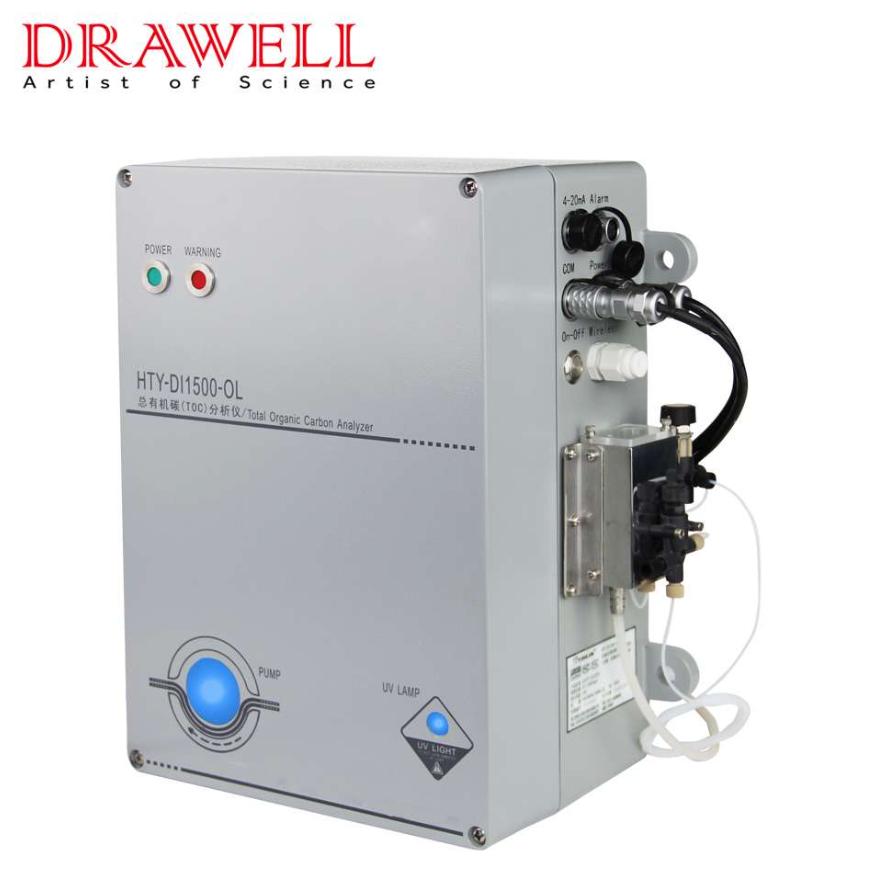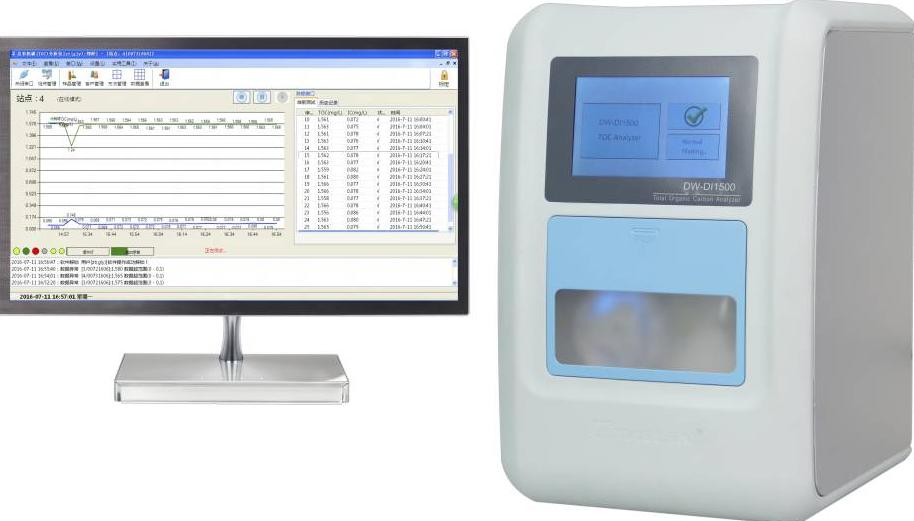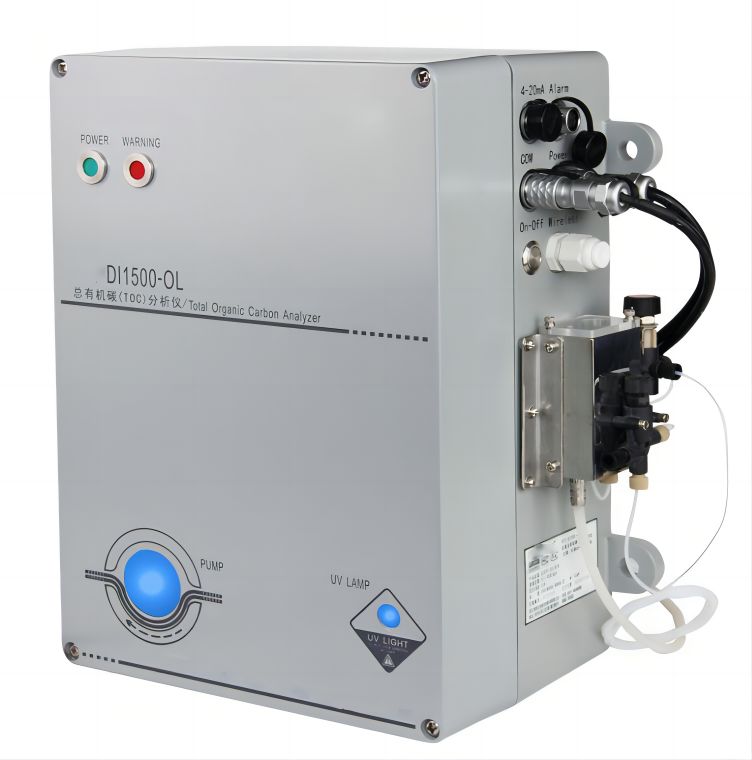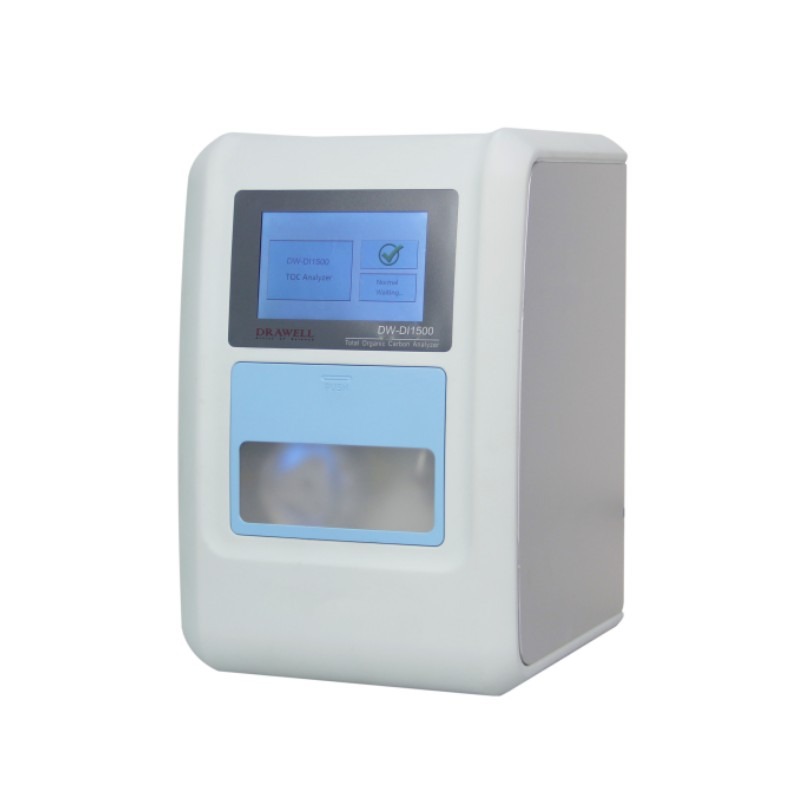Total Organic Carbon (TOC) water analysis is a critical technique for determining the organic content of water samples. This analytical method is critical in a variety of applications, ranging from environmental monitoring and industrial quality control to pharmaceutical and biomedical research. In this post, we will dig into the world of TOC water analysis, looking at its principles, applications, and the role it plays in assuring water quality and safety.

What are the Functions of TOC Water Analysis?
TOC water analysis is a quantitative method for determining the total content of organic carbon compounds in a sample of water. Natural organic matter (NOM), industrial discharges, agricultural runoff, and even microbiological byproducts can all be sources of these organic carbon molecules. The presence of excessive organic carbon in water can lead to issues such as contamination, foul odors, and compromised water quality.
Total Organic Carbon Analyzer determines the total carbon content in a sample, both inorganic and organic. By subtracting the inorganic carbon (e.g., carbonates and bicarbonates) from the total carbon content, the concentration of organic carbon is precisely determined. This provides valuable insights into the water’s purity and potential contamination.

What are the Fundamental Principles of TOC Water Analysis?
Understanding the principles underlying TOC water analysis is critical for leveraging its power in environmental monitoring, water quality evaluation, and a variety of other applications.
1. Oxidation of Organic Carbon Compounds
The oxidation of organic carbon molecules present in the water sample is the core premise of TOC analysis. Organic carbon molecules can exist in a variety of states, including dissolved organic matter, volatile organic compounds, and non-volatile organic compounds. The purpose is to transform these various organic chemicals into a quantifiable form known as carbon dioxide (CO2).
2. Sample Preparation
Before the analysis begins, the water sample undergoes preparation to ensure accurate results. This typically involves several crucial steps:
Filtration: To remove any suspended solids or particulate matter from the sample.
Acidification: Addition of an acid (usually phosphoric acid) to convert inorganic carbon species (e.g., carbonates and bicarbonates) into CO2.
Degassing: Removing any dissolved gases from the sample that could interfere with the analysis.
3. Combustion or Oxidation
Once prepared, the water sample is either burned or oxidized in a high-temperature combustion chamber. The sample is heated to temperatures that typically reach 700°C during this stage. Organic carbon compounds are broken down into CO2 gas during combustion or oxidation.
4. Detection and Quantification
The CO2 generated is then measured and quantified through a TOC analyzer. Various detection methods are available, with two popular approaches being:
Non-Dispersive Infrared (NDIR) Spectroscopy: A detector measures the absorption of specific wavelengths of infrared light by CO2 molecules in this way. The extent of absorption is proportional to the concentration of CO2, which represents the sample’s organic carbon content.
Conductivity Measurement: Another method is to measure the solution’s electrical conductivity before and after combustion or oxidation. The difference in conductivity is proportional to the amount of CO2 created throughout the process.
5. Calculation of TOC Concentration
The TOC concentration is estimated using the amount of CO2 produced during the combustion or oxidation process. This computation includes any inorganic carbon species transformed to CO2 during acidification.
6. Calibration and Quality Control
TOC analyzers are calibrated using standards of known TOC concentrations to assure reliable findings. Furthermore, quality control procedures such as running blanks and standards are used to ensure the analysis’s correctness and precision.
- Reporting and Interpretation
The final TOC concentration is usually stated in milligrams of carbon per liter (mg/L) or parts per million (ppm). These findings are interpreted by researchers and analysts to assess water quality, regulatory compliance, and the presence of organic pollutants.
TOC water analysis is based on the premise of converting organic carbon molecules in water samples into quantifiable carbon dioxide by oxidizing them.

What are the Applications of TOC Water Analysis?
- Environmental Monitoring: TOC analysis is critical for determining the quality of natural water sources such rivers, lakes, and groundwater. It helps identify contamination from industrial discharges, agricultural runoff, or sewage.
- Wastewater Treatment: Industries and municipalities employ TOC analysis to monitor and optimize wastewater treatment processes, ensuring compliance with regulatory standards.
- Pharmaceuticals: In the pharmaceutical industry, TOC analysis is essential for verifying the purity of water used in drug manufacturing processes and for quality control of final products.
- Drinking Water: TOC analysis is used to assess the safety of drinking water supplies by detecting possible organic pollutants.
- Research and Development: TOC analysis is used in research and development laboratories to examine the organic content of water samples, which is important in domains such as environmental science, chemistry, and biology.

What is the Significance of TOC Water Analysis?
The importance of TOC water analysis stems from its capacity to give a thorough assessment of water quality and safety. This analytical technique aids in:
- Identifying probable sources of pollution in water sources by assessing the organic carbon level.
- Ensuring that regulatory standards and environmental regulations are followed.
- Optimizing the efficiency of industrial operations and wastewater treatment.
- Guaranteeing the cleanliness of water used in crucial applications like pharmaceutical manufacturing.
- Supporting research endeavors aimed at understanding the composition and behavior of organic carbon in water.
Conclusion
In conclusion, TOC water analysis is an important analytical tool for ensuring water quality and purity in a variety of industries. Its capacity to assess the organic carbon content of water samples enables informed decision-making, regulatory compliance, and environmental and human health protection. TOC analysis remains a cornerstone in the drive for cleaner and safer water resources as water quality remains a global concern.



